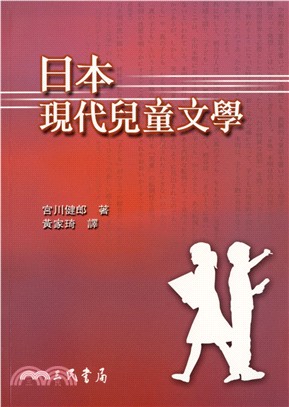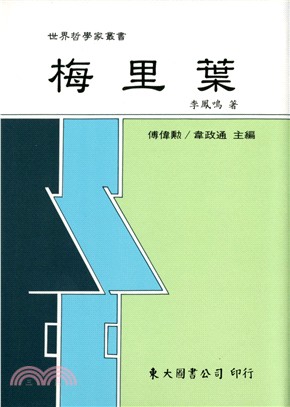定價
:NT$ 5006 元優惠價
:90 折 4505 元
若需訂購本書,請電洽客服 02-25006600[分機130、131]。
相關商品
商品簡介
作者簡介
目次
商品簡介
This fully revised and updated edition introduces the reader to sedimentology and stratigraphic principles, and provides tools for the interpretation of sediments and sedimentary rocks. The processes of formation, transport and deposition of sediment are considered and then applied to develop conceptual models for the full range of sedimentary environments, from deserts to deep seas and reefs to rivers.
Different approaches to using stratigraphic principles to date and correlate strata are also considered, in order to provide a comprehensive introduction to all aspects of sedimentology and stratigraphy. The text and figures are designed to be accessible to anyone completely new to the subject, and all of the illustrative material is provided in an accompanying CD-ROM. High-resolution versions of these images can also be downloaded from the companion website for this book at:
www.wiley.com/go/nicholssedimentology.
Different approaches to using stratigraphic principles to date and correlate strata are also considered, in order to provide a comprehensive introduction to all aspects of sedimentology and stratigraphy. The text and figures are designed to be accessible to anyone completely new to the subject, and all of the illustrative material is provided in an accompanying CD-ROM. High-resolution versions of these images can also be downloaded from the companion website for this book at:
www.wiley.com/go/nicholssedimentology.
作者簡介
Gary Nichols teaches sedimentology and stratigraphy at Royal Holloway University of London, UK, and has also recently taught courses at the University Centre on Svalbard, Norway. His research interests in the analysis of facies and sedimentary basins have taken him to every continent, providing experience of a wide range of sedimentary rocks types of different ages in a variety of depositional settings.
目次
Preface.
Acknowledgements.
1 Introduction: sedimentology and stratigraphy.
1.1. Sedimentary processes.
1.2 Sedimentary environments and facies.
1.3 The spectrum of environments and facies.
1.4 Stratigraphy.
1.5 The structure of this book.
2 Terrigenous clastic sediments: gravel, sand and mud.
2.1 Classification of sediments and sedimentary rocks.
2.2 Gravel and conglomerate.
2.3 Sand and sandstone.
2.4 Clay, silt and mudrock.
2.5 Textures and analysis of terrigenous clastic sedimentary rocks.
2.6 Terrigenous clastic sediments: summary.
3 Biogenic, chemical and volcanogenic sediments.
3.1 Limestone.
3.2 Evaporite minerals.
3.3 Cherts.
3.4 Sedimentary phosphates.
3.5 Sedimentary ironstone.
3.6 Carbonaceous (organic) deposits.
3.7 Volcaniclastic rocks.
4 Processes of transport and sedimentary structures.
4.1 Transport media.
4.2 The behaviour of fluids and particles in fluids.
4.3 Flows, sediment and bedforms.
4.4 Waves.
4.5 Mass flows.
4.6 Mudcracks.
4.7 Erosional sedimentary structures.
4.8 Teminology for sedimentary structures and beds.
4.9 Sedimentary structures and sedimentary environments.
5 Field sedimentology, facies and environments.
5.1 Field sedimentology.
5.2 Graphic sedimentary logs.
5.3 Palaeocurrents.
5.4 Collection of rock samples.
5.5 Description of core.
5.6 Interpreting past depositional environments.
5.7 Reconstructing palaeoenvironments in space and time.
5.8 Summary: facies and environments.
6 Continents: sources of sediment.
6.1 From source of sediment to formation of strata.
6.2 Mountain building processes.
6.3 Global climate.
6.4 Weathering processes.
6.5 Erosion and transport.
6.6 Denudation and landscape evolution.
6.7 Tectonics and denudation.
6.8 Measuring rates of denudation.
6.9 Denudation and sediment supply: summary.
7 Glacial environments.
7.1 Distribution of glacial environments.
7.2 Glacial ice.
7.3 Glaciers.
7.4 Continental glacial deposition.
7.5 Marine glacial environments.
7.6 Distribution of glacial deposits.
7.7 Ice, climate and tectonics.
7.8 Summary of glacial environments.
8 Aeolian processes.
8.1 Aeolian transport.
8.2 Deserts and ergs.
8.3 Characteristics of wind-blown particles.
8.4 Aeolian bedforms.
8.5 Desert environments.
8.6 Aeolian deposits outside deserts.
8.7 Summary.
9 Rivers and alluvial fans.
9.1 Fluvial and alluvial systems.
9.2 River forms.
9.3 Floodplain deposition.
9.4 Architecture of fluvial deposits.
9.5 Alluvial fans.
9.6 Fossils in fluvial and alluvial environments.
9.7 Soils and palaeosols.
9.8 Fluvial and alluvial fan deposition: summary.
10 Lakes.
10.1 Lakes and lacustrine environments.
10.2 Freshwater lakes.
10.3 Saline Lakes.
10.4 Ephemeral lakes.
10.5 Controls on lacustrine deposition.
10.6 Life in lakes and fossils in lacustrine deposits.
10.7 Recognition of lacustrine facies.
11 The marine realm: morphology and processes.
11.1 Divisions of the marine realm.
11.2 Tides.
11.3 Wave and storm processes.
11.4 Thermo-haline and geostrophic currents.
11.5 Chemical and biochemical sedimentation in oceans.
11.6 Marine fossils.
11.7 Trace fossils.
11.8 Marine environments: summary.
12 Deltas.
12.1 River mouths, deltas and estuaries.
12.2 Types of delta.
12.3 Delta environments and successions.
12.4 Variations in delta morphology and facies.
12.5 Deltaic cycles and stratigraphy.
12.6 Syn-depositional deformation in deltas.
12.7 Recognition of deltaic deposits.
13 Clastic coasts and estuaries.
13.1 Coasts.
13.2 Beaches.
13.3 Barrier and lagoon systems.
13.4 Tides and coastal systems.
13.5 Coastal successions.
13.6 Estuaries.
13.7 Fossils in coastal and estuarine environments.
14 Shallow sandy seas.
14.1 Shallow marine environments of terrigenous clastic deposition.
14.2 Storm-dominated shallow clastic seas.
14.3 Tide-dominated clastic shallow seas.
14.4 Responses to change in sea level.
14.5 Criteria for the recognition of sandy shallow marine sediments.
15 Shallow marine carbonate and evaporite environments.
15.2 Coastal environments.
15.3 Shelf environments.
15.4 Types of carbonate platform.
15.5 Evaporitic basins.
16 Deep marine environments.
16.1 Ocean basins.
16.2 Submarine Fans.
16.3 Slope aprons.
16.4 Contourites.
16. 5 Oceanic sediments.
16.6 Fossils in deep ocean sediments.
16.7 Recognition of deep ocean deposits: summary.
17 Volcanic environments.
17.1 Volcanic rocks and sediment.
17.2 Transport and deposition of volcaniclastic material.
17.3 Eruption styles.
17.4 Facies associations in volcanic successions.
17.5 Volcanic material in other environments.
17.6 Volcanic rocks in Earth history.
17.7 Recognition of volcanic deposits: summary.
18 Post-depositional structures and diagenesis.
18.1 Post-depositional modification of sedimentary layers.
18.2 Diagenetic processes.
18.3 Clastic diagenesis.
18.4 Carbonate diagenesis.
18.5 Post-depositional changes to evaporites.
18.6 Diagenesis of volcaniclastic sediments.
18.7 Formation of coal, oil and gas.
19 Stratigraphy: concepts and lithostratigraphy.
19.1 Geologic time.
19.2 Stratigraphic units.
19.3 Lithostratigraphy.
19.4 Applications of lithostratigraphy.
20 Biostratigraphy.
20.1 Fossils and stratigraphy.
20.2 Classification of organisms.
20.3 Evolutionary trends.
20.4 Biozones and zone fossils.
20.5 Taxa used in biostratigraphy.
20.6 Biostratigraphic correlation.
20.7 Biostratigraphy in relation to other stratigraphic techniques.
21 Dating and correlation techniques.
21.1 Dating and correlation techniques.
21.2 Radiometric dating.
21.3 Other isotopic and chemical techniques.
21.4 Magnetostratigraphy.
21.5 Dating in the Quaternary.
22 Subsurface stratigraphy and sedimentology.
22.1 Introduction to subsurface stratigraphy and sedimentology.
22.2 Seismic reflection data.
22.3 Borehole stratigraphy and sedimentology.
22.4 Geophysical logging.
22.5 Subsurface facies and basin analysis.
23 Sequence stratigraphy and sea level changes.
23.1 Sea level changes and sedimentation.
23.2 Depositional sequences and systems tracts.
23.3 Parasequences: components of systems tracts.
23.4 Carbonate sequence stratigraphy.
23.5 Sequence stratigraphy in non-marine basins.
23.6 Alternative schemes in sequence stratigraphy.
23.7 Applications of sequence stratigraphy.
23.8 Causes of sea level fluctuations.
23.9 Summary.
24 Sedimentary basins.
24.1 Controls on sediment accumulation.
24.2 Basins related to lithospheric extension.
24.3 Basins related to subduction.
24.4 Basins related to crustal loading.
24.5 Basins related to strike-slip plate boundaries.
24.6 Complex and hybrid basins.
24.7 The record of tectonics in stratigraphy.
24.8 Sedimentary basin analysis.
24.9 The sedimentary record.
References.
Index
Acknowledgements.
1 Introduction: sedimentology and stratigraphy.
1.1. Sedimentary processes.
1.2 Sedimentary environments and facies.
1.3 The spectrum of environments and facies.
1.4 Stratigraphy.
1.5 The structure of this book.
2 Terrigenous clastic sediments: gravel, sand and mud.
2.1 Classification of sediments and sedimentary rocks.
2.2 Gravel and conglomerate.
2.3 Sand and sandstone.
2.4 Clay, silt and mudrock.
2.5 Textures and analysis of terrigenous clastic sedimentary rocks.
2.6 Terrigenous clastic sediments: summary.
3 Biogenic, chemical and volcanogenic sediments.
3.1 Limestone.
3.2 Evaporite minerals.
3.3 Cherts.
3.4 Sedimentary phosphates.
3.5 Sedimentary ironstone.
3.6 Carbonaceous (organic) deposits.
3.7 Volcaniclastic rocks.
4 Processes of transport and sedimentary structures.
4.1 Transport media.
4.2 The behaviour of fluids and particles in fluids.
4.3 Flows, sediment and bedforms.
4.4 Waves.
4.5 Mass flows.
4.6 Mudcracks.
4.7 Erosional sedimentary structures.
4.8 Teminology for sedimentary structures and beds.
4.9 Sedimentary structures and sedimentary environments.
5 Field sedimentology, facies and environments.
5.1 Field sedimentology.
5.2 Graphic sedimentary logs.
5.3 Palaeocurrents.
5.4 Collection of rock samples.
5.5 Description of core.
5.6 Interpreting past depositional environments.
5.7 Reconstructing palaeoenvironments in space and time.
5.8 Summary: facies and environments.
6 Continents: sources of sediment.
6.1 From source of sediment to formation of strata.
6.2 Mountain building processes.
6.3 Global climate.
6.4 Weathering processes.
6.5 Erosion and transport.
6.6 Denudation and landscape evolution.
6.7 Tectonics and denudation.
6.8 Measuring rates of denudation.
6.9 Denudation and sediment supply: summary.
7 Glacial environments.
7.1 Distribution of glacial environments.
7.2 Glacial ice.
7.3 Glaciers.
7.4 Continental glacial deposition.
7.5 Marine glacial environments.
7.6 Distribution of glacial deposits.
7.7 Ice, climate and tectonics.
7.8 Summary of glacial environments.
8 Aeolian processes.
8.1 Aeolian transport.
8.2 Deserts and ergs.
8.3 Characteristics of wind-blown particles.
8.4 Aeolian bedforms.
8.5 Desert environments.
8.6 Aeolian deposits outside deserts.
8.7 Summary.
9 Rivers and alluvial fans.
9.1 Fluvial and alluvial systems.
9.2 River forms.
9.3 Floodplain deposition.
9.4 Architecture of fluvial deposits.
9.5 Alluvial fans.
9.6 Fossils in fluvial and alluvial environments.
9.7 Soils and palaeosols.
9.8 Fluvial and alluvial fan deposition: summary.
10 Lakes.
10.1 Lakes and lacustrine environments.
10.2 Freshwater lakes.
10.3 Saline Lakes.
10.4 Ephemeral lakes.
10.5 Controls on lacustrine deposition.
10.6 Life in lakes and fossils in lacustrine deposits.
10.7 Recognition of lacustrine facies.
11 The marine realm: morphology and processes.
11.1 Divisions of the marine realm.
11.2 Tides.
11.3 Wave and storm processes.
11.4 Thermo-haline and geostrophic currents.
11.5 Chemical and biochemical sedimentation in oceans.
11.6 Marine fossils.
11.7 Trace fossils.
11.8 Marine environments: summary.
12 Deltas.
12.1 River mouths, deltas and estuaries.
12.2 Types of delta.
12.3 Delta environments and successions.
12.4 Variations in delta morphology and facies.
12.5 Deltaic cycles and stratigraphy.
12.6 Syn-depositional deformation in deltas.
12.7 Recognition of deltaic deposits.
13 Clastic coasts and estuaries.
13.1 Coasts.
13.2 Beaches.
13.3 Barrier and lagoon systems.
13.4 Tides and coastal systems.
13.5 Coastal successions.
13.6 Estuaries.
13.7 Fossils in coastal and estuarine environments.
14 Shallow sandy seas.
14.1 Shallow marine environments of terrigenous clastic deposition.
14.2 Storm-dominated shallow clastic seas.
14.3 Tide-dominated clastic shallow seas.
14.4 Responses to change in sea level.
14.5 Criteria for the recognition of sandy shallow marine sediments.
15 Shallow marine carbonate and evaporite environments.
15.2 Coastal environments.
15.3 Shelf environments.
15.4 Types of carbonate platform.
15.5 Evaporitic basins.
16 Deep marine environments.
16.1 Ocean basins.
16.2 Submarine Fans.
16.3 Slope aprons.
16.4 Contourites.
16. 5 Oceanic sediments.
16.6 Fossils in deep ocean sediments.
16.7 Recognition of deep ocean deposits: summary.
17 Volcanic environments.
17.1 Volcanic rocks and sediment.
17.2 Transport and deposition of volcaniclastic material.
17.3 Eruption styles.
17.4 Facies associations in volcanic successions.
17.5 Volcanic material in other environments.
17.6 Volcanic rocks in Earth history.
17.7 Recognition of volcanic deposits: summary.
18 Post-depositional structures and diagenesis.
18.1 Post-depositional modification of sedimentary layers.
18.2 Diagenetic processes.
18.3 Clastic diagenesis.
18.4 Carbonate diagenesis.
18.5 Post-depositional changes to evaporites.
18.6 Diagenesis of volcaniclastic sediments.
18.7 Formation of coal, oil and gas.
19 Stratigraphy: concepts and lithostratigraphy.
19.1 Geologic time.
19.2 Stratigraphic units.
19.3 Lithostratigraphy.
19.4 Applications of lithostratigraphy.
20 Biostratigraphy.
20.1 Fossils and stratigraphy.
20.2 Classification of organisms.
20.3 Evolutionary trends.
20.4 Biozones and zone fossils.
20.5 Taxa used in biostratigraphy.
20.6 Biostratigraphic correlation.
20.7 Biostratigraphy in relation to other stratigraphic techniques.
21 Dating and correlation techniques.
21.1 Dating and correlation techniques.
21.2 Radiometric dating.
21.3 Other isotopic and chemical techniques.
21.4 Magnetostratigraphy.
21.5 Dating in the Quaternary.
22 Subsurface stratigraphy and sedimentology.
22.1 Introduction to subsurface stratigraphy and sedimentology.
22.2 Seismic reflection data.
22.3 Borehole stratigraphy and sedimentology.
22.4 Geophysical logging.
22.5 Subsurface facies and basin analysis.
23 Sequence stratigraphy and sea level changes.
23.1 Sea level changes and sedimentation.
23.2 Depositional sequences and systems tracts.
23.3 Parasequences: components of systems tracts.
23.4 Carbonate sequence stratigraphy.
23.5 Sequence stratigraphy in non-marine basins.
23.6 Alternative schemes in sequence stratigraphy.
23.7 Applications of sequence stratigraphy.
23.8 Causes of sea level fluctuations.
23.9 Summary.
24 Sedimentary basins.
24.1 Controls on sediment accumulation.
24.2 Basins related to lithospheric extension.
24.3 Basins related to subduction.
24.4 Basins related to crustal loading.
24.5 Basins related to strike-slip plate boundaries.
24.6 Complex and hybrid basins.
24.7 The record of tectonics in stratigraphy.
24.8 Sedimentary basin analysis.
24.9 The sedimentary record.
References.
Index
主題書展
更多
主題書展
更多書展本週66折
您曾經瀏覽過的商品
購物須知
外文書商品之書封,為出版社提供之樣本。實際出貨商品,以出版社所提供之現有版本為主。部份書籍,因出版社供應狀況特殊,匯率將依實際狀況做調整。
無庫存之商品,在您完成訂單程序之後,將以空運的方式為你下單調貨。為了縮短等待的時間,建議您將外文書與其他商品分開下單,以獲得最快的取貨速度,平均調貨時間為1~2個月。
為了保護您的權益,「三民網路書店」提供會員七日商品鑑賞期(收到商品為起始日)。
若要辦理退貨,請在商品鑑賞期內寄回,且商品必須是全新狀態與完整包裝(商品、附件、發票、隨貨贈品等)否則恕不接受退貨。
























